Periscope Up by A.J.S. Rayl
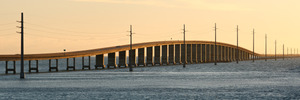 Life as we know it cannot exist without water. It’s all around
us. It’s in us. It is essential to almost everything we do. It is
essential to every living thing. Where there is water, we have always
found life.
Life as we know it cannot exist without water. It’s all around
us. It’s in us. It is essential to almost everything we do. It is
essential to every living thing. Where there is water, we have always
found life.
“Water ties together everything we care about,” says environmental scientist Peter Gleick, president of the Pacific Institute, Oakland California, renowned for its research on water issues. But, abundant as it is, he says, “we are facing a crisis of running out of sustainably managed water.”
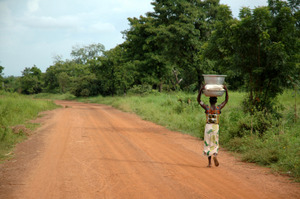 With global population and development on the rise, we’re
consuming water like there’s no tomorrow. Humanity already
appropriates more than 50 percent of all renewable and accessible
freshwater flows, Gleick says. Yet, an estimated 1.2 billion people, of
the 6.8 billion on the planet, lack access to safe water.
With global population and development on the rise, we’re
consuming water like there’s no tomorrow. Humanity already
appropriates more than 50 percent of all renewable and accessible
freshwater flows, Gleick says. Yet, an estimated 1.2 billion people, of
the 6.8 billion on the planet, lack access to safe water.
“There are places in the world where people have to walk several miles just to get a bucket of water,” says engineer-economist R. K. Pachauri, chair of the Intergovernmental Panel on Climate Change (IPCC), which shared the Nobel Peace Prize with Vice President Al Gore in 2007. “This is not fiction,” he adds. “And another 2.4 billion people lack sanitation facilities.” Combined, that’s half of humanity.
Midway through the United Nations’ International Decade for Action: Water for Life, 2005–2015, the Millennium Development goal to “halve the proportion of people without sustainable access to safe drinking water and basic sanitation” is making “[s]ome remarkable progress” in meeting safe water needs, Gleick writes in The World’s Water 2008-2009, the biennial “book on water” he’s been authoring since 1998. “We are failing miserably, however, in meeting sanitation needs,” and Africa is still “neglected.”
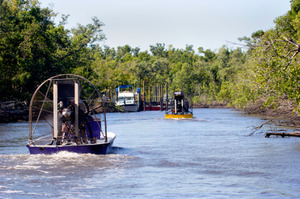 We have also failed some once-rich ecosystems, now overburdened by
our use of their waters. There is a threshold, a critical point Gleick
and colleagues call “peak ecological water,” where humans
use more water than the ecosystem can sustain without significant
deterioration and degradation. We may have reached that point in places
like the Florida Everglades and the Aral Sea. Despite restoration
attempts, these vast wetland ecosystems tragically continue to decline.
We have also failed some once-rich ecosystems, now overburdened by
our use of their waters. There is a threshold, a critical point Gleick
and colleagues call “peak ecological water,” where humans
use more water than the ecosystem can sustain without significant
deterioration and degradation. We may have reached that point in places
like the Florida Everglades and the Aral Sea. Despite restoration
attempts, these vast wetland ecosystems tragically continue to decline.
“If you follow the money since 1950, you will follow the water,” says Christian environmental ethicist Larry Rasmussen, professor emeritus at the Union Theological Seminary. The route, he says, has taken us to this endpoint of undermining not only the quantity and availability of freshwater supplies, but also the capacity of nature’s economy to thrive and survive. “The global consumer economy is colliding with Earth’s economy,” he says.
There’s also the 600-pound gorilla in the pond: climate change. No one knows exactly how climate change will alter our world, but experts agree it will. They also agree that we already see evidence of such changes on our water resources, especially in drought-ridden Africa, and other thirsty regions like the western United States. The predictions are sobering. The average supply of water per person worldwide is expected to drop by one-third over the next 20 years, in part because of climate change, according to the IPCC. And climate change is predicted to cause a 20 percent increase in water scarcity up to 2050.
The gorilla in the pond, meanwhile, is looming larger. Will climate change ultimately cause us to merely suffer bouts of harsh inconvenience with relatively moderate loss of life? Or will we bear witness to catastrophic collapses that lead to starvation, massive migration, water wars, and millions of human (and dozens of, ecosystem) deaths?
 With all of our technology, living as we do on a planet that is 71
percent water, a renewable resource, it’s hard to believe that our
access to this vital element could be threatened.
With all of our technology, living as we do on a planet that is 71
percent water, a renewable resource, it’s hard to believe that our
access to this vital element could be threatened.
Of all the water on Earth, however, just 3 percent is freshwater, 2 percent or two-thirds of which is frozen in glaciers and snowcaps, or locked in deep groundwater, leaving less than 1 percent available for our use. That 1 percent must sustain the billions of people living today, as well as the two billion-plus more to arrive in the next 15 years, all the ecosystems and every living thing, great and small, within each of them. Also, while water is a renewable resource, not all water use is renewable. Some water uses are nonrenewable and unsustainable, following “a peak-oil-type curve,” as Gleick and colleagues have put forward, complete with a precipitous decline as we are now seeing in ecosystems around the world.
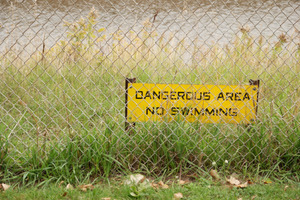 “It used to be we had wide open rivers,” says geographer
and river scientist William Graf, professor at the University of South
Carolina. But humankind has taken over and changed the planet’s
natural landscapes, building dams that, however inadvertently,
devastated entire ecosystems, altering the flows and changing the
composition of the water by polluting it with agricultural fertilizers
and pesticides, industrial chemicals, and the cocktail of contaminants
we flush down the toilet.
“It used to be we had wide open rivers,” says geographer
and river scientist William Graf, professor at the University of South
Carolina. But humankind has taken over and changed the planet’s
natural landscapes, building dams that, however inadvertently,
devastated entire ecosystems, altering the flows and changing the
composition of the water by polluting it with agricultural fertilizers
and pesticides, industrial chemicals, and the cocktail of contaminants
we flush down the toilet.
Given all the ways we’ve messed with Mother Nature, it’s easy to see how pressure is building on that 1 percent. “We cannot afford to waste the quality of our waters or the quantity of our waters, because there is a limit to water of good quality for human beings, organisms, and ecosystems,” says marine ecologist Nancy Rabalais, executive director of the Louisiana Universities Marine Consortium, who has spent two decades studying how pollution of the Mississippi River has led to ecological devastation in the Gulf of Mexico.
Since the planet’s hydrology is truly a cycle, the oceans, surface water, and groundwater are all interconnected and interdependent. Water is continuously moving through the cycle, on, above, and below the surface of Earth, often changing states as it travels, from liquid to vapor or ice. Once contaminants enter the hydrologic cycle, they’re there until we take them out or until it can, over the long term, detoxify itself organically. Today, pristine water, in the classic sense, is rare. In fact, only 2 percent of America’s rivers still rank as “pristine.”
“The era of taking water for granted is over,” sums up water chemist David Sedlak, professor at the University of California Berkeley, known for his research into human steroids and pharmaceuticals in drinking supplies. “Now it’s up to us to make the system work in the most sustainable way possible.”
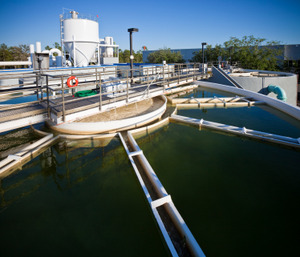 Despite all the mistakes and abuse of resources that will no doubt
make our descendants blush with embarrassment, we are not doomed, says
engineer-water manager Asit Biswas, founder of the Third World Centre
for Water Management in Atizapan, Mexico. “Each of the problems
can be solved economically, politically, and with science and
technology.”
Despite all the mistakes and abuse of resources that will no doubt
make our descendants blush with embarrassment, we are not doomed, says
engineer-water manager Asit Biswas, founder of the Third World Centre
for Water Management in Atizapan, Mexico. “Each of the problems
can be solved economically, politically, and with science and
technology.”
The only question, absurd as it might seem, is: Do we want to?
It will take cutting-edge science and new technologies, human ingenuity, and a lot of money and commitment, specifically a decades-long commitment, orders of magnitude beyond the 10-second sound bite world in which we live today. And it’s going to take something else, something that may be the greatest—and most urgent—challenge for our global village, says Rasmussen. “There will be changes in the next few years on a scale that we haven’t seen before and our present ethical frameworks are not adequate for addressing this crisis,” he says. “These issues and problems require people being motivated to do the work. They require changes in the way people see things, changes in values that people hold. In most of human history, change of this sort involves a spiritual or religious or a faith dimension. Knowledge itself doesn’t suffice in getting people to muster the political will to change the condition.”
Up the Creek
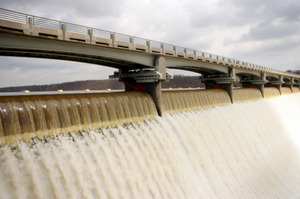 The water crisis in America today can be traced in part back to good
intentions, the Great Depression, and Western expansion. “Water
was a key to development in the West,” says Graf. “Dams
played an important role in that resuscitation of the economy, providing
employment and creating new systems, such as the Tennessee Valley
Authority, that had lasting, positive impacts.” As a nation, we
thought of dam-builders as heroes. “And they were,” he says.
“They created some of the most magnificent engineering structures
in the world and those structures had enormous social and economic
benefit.”
The water crisis in America today can be traced in part back to good
intentions, the Great Depression, and Western expansion. “Water
was a key to development in the West,” says Graf. “Dams
played an important role in that resuscitation of the economy, providing
employment and creating new systems, such as the Tennessee Valley
Authority, that had lasting, positive impacts.” As a nation, we
thought of dam-builders as heroes. “And they were,” he says.
“They created some of the most magnificent engineering structures
in the world and those structures had enormous social and economic
benefit.”
Not too many people were thinking then about ecological consequences. It turns out that the installation of dams came with “surprising costs,” particularly to ecological systems. “That has come home to roost,” says Graf, from the Florida Everglades to the once mighty Colorado, where wholesale extinctions turned our magnificent creations into environmental tombstones. “The people working to restore the Everglades argue that if they can’t get it right in the Everglades, we’re probably not going to get other places right,” he says. “The problems there are the same as for other rivers—lack of a sufficient amount of water to keep human needs satisfied and, at the same time, operate the system so that it allows the survival of the natural species.”
Damming changed the landscape and natural morphology of rivers. “The Mississippi River is no longer a ‘natural’ river,” Rabalais points out. “It has been channelized, leveed, and allowed to flow into the floodplain.”
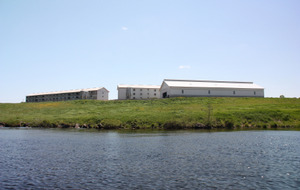 Humankind has also used the Mississippi, like it has other rivers, as
a dumping ground. An estimated 40 percent of American rivers are now too
polluted for fishing or swimming or aquatic life. Synthetic fertilizers,
rich in nitrogen and phosphorus, and pesticides, enhanced with designer
chemicals, have washed off farmlands and into various parts of the
Mississippi only to have “direct effects” on coastal
ecosystems, says Rabalais. “Human activities thousands of
kilometers away are determining the quality of water that reaches the
northern Gulf of Mexico.”
Humankind has also used the Mississippi, like it has other rivers, as
a dumping ground. An estimated 40 percent of American rivers are now too
polluted for fishing or swimming or aquatic life. Synthetic fertilizers,
rich in nitrogen and phosphorus, and pesticides, enhanced with designer
chemicals, have washed off farmlands and into various parts of the
Mississippi only to have “direct effects” on coastal
ecosystems, says Rabalais. “Human activities thousands of
kilometers away are determining the quality of water that reaches the
northern Gulf of Mexico.”
In fact, they’re choking it. The mix of chemicals running from the mouth of the Mississippi into the ocean waters has created a “dead zone,” a patch in the gulf where there isn’t enough oxygen to sustain aquatic life.
These agricultural fertilizers and pesticides are in large part contributing to the “nitrogen footprint” that we’re leaving next to our carbon footprint. “The accelerated increase in reactive nitrogen in the global ecosystem is faster than the carbon dioxide [greenhouse gas] increase and it’s just as important,” Rabalais points out. “The nitrogen footprint has an equal potential, along with the effects of CO2 increase, to disturb the balance of a global ecosystem.”
Beyond the output from synthetic nitrogen, the combustion of fossil fuels puts even more reactive nitrogen into the air, water, and soil. This imbalance in the global nitrogen cycle raises agricultural yields, but it also causes degradation of water and air quality, biodiversity, ecosystem capabilities, and ultimately human health. “The carbon, nitrogen, and phosphorous cycles are interrelated, but not often considered together—and they should be,” says Rabalais.
During the last several decades, our water supplies have also become contaminated with human hormones and chemicals from all the drugs, personal care, and cleaning products we use, some of which are laced with known carcinogens, not to mention everything else we flush out of our homes. In his research, Sedlak found that wastewater-derived contaminants can cause adverse effects in aquatic ecosystems at extremely low levels. The feminization of fish in rivers around the world, for example, has been attributed to steroid hormones, both natural and synthetic (from birth control pills), excreted by humans and not filtered out in the treatment process.
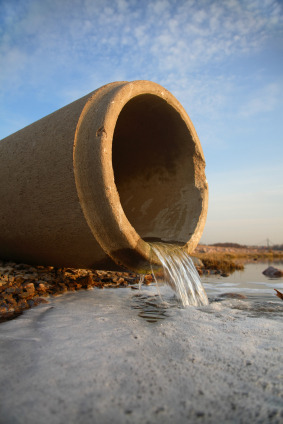 The reason pharmaceuticals and other chemicals are not filtered out
is simple: Our wastewater treatment systems were never designed to
remove these trace contaminants, Sedlak says. Most American water
treatment facilities are retrofitted, 19th-century sewage systems,
designed as a means of disposal, “to get sewage out of our
cities,” he explains. Over the years, plants have been upgraded to
remove nutrients and organics that deplete oxygen in the rivers, but not
pharmaceuticals, because—who knew?
The reason pharmaceuticals and other chemicals are not filtered out
is simple: Our wastewater treatment systems were never designed to
remove these trace contaminants, Sedlak says. Most American water
treatment facilities are retrofitted, 19th-century sewage systems,
designed as a means of disposal, “to get sewage out of our
cities,” he explains. Over the years, plants have been upgraded to
remove nutrients and organics that deplete oxygen in the rivers, but not
pharmaceuticals, because—who knew?
But “[i]n a number of important water supplies in the United States, wastewater effluent is a significant fraction of the drinking water supply,” notes Sedlak. While some drugs and contaminants are being removed as treatment plants are updated with new filtration methods, other chemicals and pharmaceuticals are not removed at all. So, if they affect fish at very low levels, what about us humans? Does this mean that we’re all, in effect, ‘on drugs’ now? “That,” says Sedlak, “is the ongoing debate in the water quality and toxicology communities.”
Down the River
The gorilla in the pond, meanwhile, is looming larger. Will climate change ultimately cause us to merely suffer bouts of harsh inconvenience with relatively moderate loss of life? Or will we bear witness to catastrophic collapses that lead to starvation, massive migration, water wars, and millions of human (and dozens of, ecosystem) deaths?
The unknown factors in the equation are us and it, says Pachauri—specifically, how we are going to respond to the water crisis upon us, and how exactly the climate system will respond to rising temperatures and greenhouse gas concentrations.
Even in the best of all possible outcomes though, climate change will significantly affect our water resources, because, as Gleick bottom-lines it, “[t]he hydrologic cycle is the climate cycle.”
 The first signs of climate change have already appeared in
fluctuations in precipitation, in extreme weather events, including
droughts, floods, severe hurricanes like Katrina and Ike, and in the
melting of polar ice and glaciers. As population density increases and
water availability decreases through global warming and climate change,
the emerging problems will be numerous and often complex.
The first signs of climate change have already appeared in
fluctuations in precipitation, in extreme weather events, including
droughts, floods, severe hurricanes like Katrina and Ike, and in the
melting of polar ice and glaciers. As population density increases and
water availability decreases through global warming and climate change,
the emerging problems will be numerous and often complex.
 In the developing countries, the issue will likely be about access.
“Cities like Delhi, Madras, Mexico City, Manila, and Bangkok will
have a problem, but they will manage because these mega-cities are where
the elite of the country sleep,” says Biswas. “The real
water problem, in just five to ten years, will be the more rural areas,
and the small to medium-size cities of 20,000 to 500,000, communities
with no money, political power, expertise, no nothing,” he says.
“Their number is growing exponentially—and not a single
country is thinking about this.”
In the developing countries, the issue will likely be about access.
“Cities like Delhi, Madras, Mexico City, Manila, and Bangkok will
have a problem, but they will manage because these mega-cities are where
the elite of the country sleep,” says Biswas. “The real
water problem, in just five to ten years, will be the more rural areas,
and the small to medium-size cities of 20,000 to 500,000, communities
with no money, political power, expertise, no nothing,” he says.
“Their number is growing exponentially—and not a single
country is thinking about this.”
Here in the United States, and in other developed countries, water quality will top the water agenda, unless, of course, drought has parched a region. In particular, the controversy of upstream communities discharging into the water supply of downstream communities will come to the fore, says Sedlak. “The Trinity River in Texas, for example, flows out of Dallas-Fort Worth downstream to Lake Livingston, a reservoir for Houston,” he says. “Just about everyone’s water supply has someone influencing it upstream, if not a sewage treatment plant, then maybe agricultural runoff or storm-water runoff from the city. That is just the reality now.”
Most experts envision an increase in political disputes and conflicts over shared water as climate change takes hold. “Throughout history there has been conflict over water,” says Gleick, who logs the events for The World’s Water series. In the United States, there have been decades of dispute over Colorado River water in the West, for example, and, on the other side of the world, over rights to the Nile.
Not everyone in the water world, however, is so convinced scarcity and conflict are necessarily “preeminent” in our future. “That the world is facing a crisis right now because of physical scarcity of water, is a bunch of baloney,” says Biswas. “My thesis is that if things are properly done and, at the same time, people who need the water and cannot afford to pay get a targeted subsidy—not everyone, only the poor—we can address this problem. And there are plenty of examples of cooperation and collaboration among rivals, where water has unified people, from the United States to Asia,” he adds.
Whatever the future holds, these experts agree it’s time to get it together. Otherwise, at the global level “we’ll be facing a continued failure to meet basic human needs for water and more than two million deaths per year from preventable water-related diseases,” says Gleick. Locally, he says, “we’ll see continued ecological destructions, loss of fisheries, extinctions of aquatic species, the drying up of river deltas in more and more places and more severely with climate change.” While we cannot stop the storms of climate change, “we can move to a different future,” he says, “and meet the basic needs for water for everyone and every ecosystem.”
Making the Sea Change
Acknowledging our place in, and impact on, the biosphere is the first step to initiating the sea change needed. “We need to think about our relationship to the hydrologic cycle and understand that it’s not a simple cartoon where ocean water evaporates, goes to the mountains, rains down on us, and eventually goes back to the sea. We have to recognize that we are part of the hydrologic cycle,” says Sedlak.
From there, we step onto the “soft path,” Gleick posits, adapting the phrase coined by Amory Lovins in the 1970s with respect to meeting human energy needs. Rather than seek endless sources of new supply, “[w]e learn to use water efficiently, properly price water, bring communities into decision-making, protect our ecosystems, and give communities decision-making power over water.” The soft path for water, he says, is “a comprehensive approach” to water management, planning, and use that utilizes water infrastructure, but combines it with improvements in overall productivity of water use.
For the sake of the entire Earth community, as we change course to the soft path, we will need to address the issue of water justice or water democracy for all living things, says Rasmussen. “Water is the absolute requisite for life of any kind. Ethically, you have to include nonhuman elements into the equation of who gets what.”
Americans in particular will have to come to terms with the fact that clean water is not free. “The water crisis is poor management and quality governance, which includes the pricing of water, providing water, and making water management more efficient,” says Biswas. “There are simply not enough resources in the world to provide free water or highly subsidized water as is given to the farmers in California. When water is not free, then the culture that encourages water conservation will set in,” he says.
“Singapore had one of the worst water management systems in the world when a remarkable leader—Lee Kuan Yew—came in and took special interest in it,” Biswas points out. “Now, Singapore has the world’s best water management system even though its population has more than doubled. The cost of water is high, but the loss is down from 85 percent in 1993 to 4.5 percent. That’s less than New York and other American cities.”
Ultimately, everyone and every institution and organization—national governments, communities, businesses, both big and small, churches and faith communities, and individuals—will have to assume responsibility. “We really can make a difference in the watershed, in our own homes, and communities, past what the government can provide in oversight and regulation,” says Rabalais.
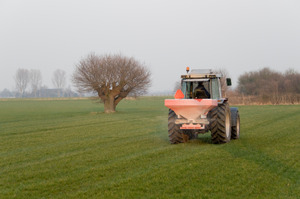 One way to address the pollution in the Mississippi River, she says,
is for the agricultural enterprise, “driven mostly by large
businesses,” to manage the process better. “There are
methods to keep the nutrients on the lands, such as not putting
fertilizer down in the fall and having it wash off before spring
planting, or treating the water with an artificial wetland that could
denitrify it before it gets to the nearest stream,” she points
out. “The government could give subsidies only to conservation
farmers. That would improve the water quality both upstream and
downstream, plus there wouldn’t be any loss of income for the
agricultural business. There are all sorts of possibilities.”
One way to address the pollution in the Mississippi River, she says,
is for the agricultural enterprise, “driven mostly by large
businesses,” to manage the process better. “There are
methods to keep the nutrients on the lands, such as not putting
fertilizer down in the fall and having it wash off before spring
planting, or treating the water with an artificial wetland that could
denitrify it before it gets to the nearest stream,” she points
out. “The government could give subsidies only to conservation
farmers. That would improve the water quality both upstream and
downstream, plus there wouldn’t be any loss of income for the
agricultural business. There are all sorts of possibilities.”
People are rising to the challenge. On the riverfront, the new ecotrend is in “reoperating” the dams. “In the short run, one major fix to halt, if not to reverse, the damage is using the things that caused the problem in the first place—the dams—as keys to solutions,” says Graf. These days, almost every one of the 137 major dams in the country—each having a reservoir with one million acre-feet of water or more—is operated “at least in part” for environmental quality purposes, he says.
 Individually and collectively we will have to take it upon ourselves
to stop contributing to the mess in whatever ways we can, beginning with
giving up bottled water. On the chemical front, pharmacists have
instituted “some innovative drug take-back programs,” so
people don’t flush what they don’t use, Sedlak points out.
“But the larger question is how we select chemicals in the first
place. There are choices we can make, the same way we gave up spray cans
that had ozone-depleting chemicals in them.”
Individually and collectively we will have to take it upon ourselves
to stop contributing to the mess in whatever ways we can, beginning with
giving up bottled water. On the chemical front, pharmacists have
instituted “some innovative drug take-back programs,” so
people don’t flush what they don’t use, Sedlak points out.
“But the larger question is how we select chemicals in the first
place. There are choices we can make, the same way we gave up spray cans
that had ozone-depleting chemicals in them.”
Think about antimicrobial hand soaps. They have been clinically shown to be no more effective than ordinary soap and water. They have also been shown to leave a host of chemicals in surface waters. Are they really necessary for everyone to use every day?
Transitioning to a new paradigm won’t happen overnight, especially given that water has forever been taken for granted in much of the world. In some countries, age-old political structure seems to thwart change. In Mexico and India, for example, heads of water utilities are appointed for very limited time periods, between 18 and 30 months, and thus, says Biswas, are ineffectual at making the necessary changes. “There are a lot of vested interests in the water utilities that want to retain the status quo, because they are benefiting from the existing, inefficient system,” he says. “You begin making changes and you run into a lot of political problems.”
As difficult as it will be to change institutional structures, if necessary, it will be more difficult to change habits, hearts, and minds. One lesson learned from the current economic recession is that we need laws and regulations to control the human propensity for greed and to otherwise keep us from running amok. Yes, there are laws protecting our water on the books, but they are not enough.
“A big part of our water problem is a lack of adequate water quality laws, but another piece of it is that even where we have them, enforcement is sometimes ineffective or nonexistent,” says Gleick. “In China—the poster child for how not to manage water—they actually do have some pretty good new national water laws. But they’re not enforced. You cannot protect water resources without both good laws and strong enforcement.”
Just like we have mileage standards for cars, we will one day have broad efficiency standards for water, says Gleick. “We already have a standard for toilets and a standard for washing machines is being developed,” he says.
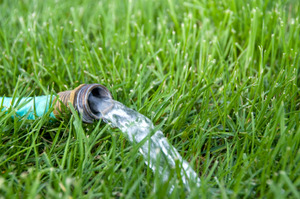 In some cities it is already against community rules to waste water.
Earlier this year, the Los Angeles Department of Water & Power put 15
fulltime “water police” officers on the streets (in hybrid
Priuses) to enforce conservation regulations. Those caught sprinkling
during peak hours or oversprinkling or washing their cement driveways
will be ticketed. Fines begin at $100.
In some cities it is already against community rules to waste water.
Earlier this year, the Los Angeles Department of Water & Power put 15
fulltime “water police” officers on the streets (in hybrid
Priuses) to enforce conservation regulations. Those caught sprinkling
during peak hours or oversprinkling or washing their cement driveways
will be ticketed. Fines begin at $100.
The soft path paradigm will also require us to get over deep-seated notions about our waste and recycled water. “All cultures have evolved with the idea that you don’t interact with your own waste—you get rid of it,” says Sedlak. “But potable water reuse is really the key issue of the future.” Biswas agrees, noting that Americans seem to have “an aversion” to recycled water. “Their reaction is—yuck,” he says. “But it’s all psychological.” That aversion is, however slowly, changing. It has to.
After decades in the works, the Groundwater Replenishment System in Orange County, California, the largest water purification project of its kind in the world, began operations last year to provide a locally controlled, drought-proof supply of safe, high-quality water for 500,000 people. Using a state-of-the-art, three-step process, the system purifies highly-treated sewer water, then injects half into the county’s seawater intrusion barrier and half into spreading basins in Anaheim, where it takes the natural path of rainwater, filtering through clay, sand, and rock to deep aquifers of the groundwater basin.
“That is closing the loop,” says Sedlak. The consciousness about how “tight” the loops are in the hydrologic cycle isn’t there yet, he says. “But it really needs to be as we think about the redesign of our waste treatment infrastructures. We have inherited a water infrastructure from the 19th century that’s not going to serve us well in the 21st century. Now that we are facing this issue of reusing our water, we have a chance to rethink our approach for dealing with waste by diluting it with water.”
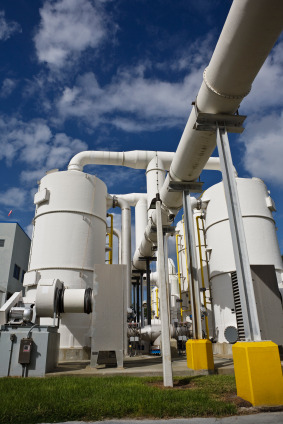 We’ve got a lot of rethinking to do. Consider that in even in
environmentally friendly California the wastewater treatment and water
delivery systems are the top consumers of electricity. “And a lot
of this highly-treated water ends up being used to water the garden and
or flush the toilet,” Sedlak points out. “Firms are building
desalination plants that use incredible amounts of energy to turn
seawater into drinking water. When we look holistically at energy use
and climate change and the impact of using all this water, it leads us
to the issue of efficiency.”
We’ve got a lot of rethinking to do. Consider that in even in
environmentally friendly California the wastewater treatment and water
delivery systems are the top consumers of electricity. “And a lot
of this highly-treated water ends up being used to water the garden and
or flush the toilet,” Sedlak points out. “Firms are building
desalination plants that use incredible amounts of energy to turn
seawater into drinking water. When we look holistically at energy use
and climate change and the impact of using all this water, it leads us
to the issue of efficiency.”
What could be more efficient than seeing the inconvenient truth of our “poop” transformed into a hot commodity? It’s more than urban legend.
“There are so many people on the planet now we’re realizing that our waste is actually a resource,” Sedlak confirms. Since ancient times human and animal excreta has been used as fertilizer, although in Europe and North America natural waste has been all but replaced by artificial fertilizers because of concern about health hazards. What is old is about to become new again, as compost latrines and biogas that “sanitize” human excreta are coming onto the market.
From an international perspective, the United States has long been out of step. “America has got to get engaged with the rest of the world,” says Pachauri frankly. “There is a vast sea of humanity elsewhere, whose stability, state of peace, and security matters to the United States. As a model of freedom, universal human rights, and doing the right thing, the United States must now look at lifestyles and what its people have been consuming and set an example to the rest of the world by making a major shift to a sustainable pattern of development. Nothing less than that is really going to help humanity.”
Bridge Over Troubled Waters
The scientists and engineers know how to shift to the new paradigm. “We have the technology,” says Biswas, “and we have the knowledge and capability.” What we don’t have—or don’t have enough of—is the desire. By most expert accounts, actually, the social or political will is the single most important factor in whether or not we—the collective ‘we’ of humanity—have enough water to drink in coming decades.
The bridges to a sustainable future are there for the making and “the will is all we need,” says Pachauri. Although Americans may be out of step, we are also the ones being tapped to step up onto the international stage and blaze the path to sustainability. “That’s because the United States is a remarkable country, where if people decide to do something, it gets done,” he notes.
There’s no time like the present. Climate change is here. The forces of the global consumer economy are clashing with the Earth’s economy as Wall Street investors eye water as the market’s next big hard asset. Acquiring the will now is going to take real, bona fide change, a message that has not entirely sunk in across the board of civilization.
“Some people just want to go back to where they can consume as they wish and just do it green,” says Rasmussen. “The dominant economic school in this country views the human economy as an abstraction, as something inside its own box. But it’s not something inside its own box. It is in the economy of the Earth. They need to make that connection—and, so far, they haven’t.”
 The only way, really, to make that connection is by breaking the grip
of the global consumer culture, accepting our place and role within the
planetary biosphere, and living, as Rasmussen says, in “an
Earth-honoring way.” In order to effect that nationally and then
globally, we will have to wipe out deeply imprinted notions like
“greed is good,” “bigger is better,” and
“success is defined by stuff,” and replace them with more
noble principles and ideals, a deeper respect for life, and truer, more
honest and equitable morals.
The only way, really, to make that connection is by breaking the grip
of the global consumer culture, accepting our place and role within the
planetary biosphere, and living, as Rasmussen says, in “an
Earth-honoring way.” In order to effect that nationally and then
globally, we will have to wipe out deeply imprinted notions like
“greed is good,” “bigger is better,” and
“success is defined by stuff,” and replace them with more
noble principles and ideals, a deeper respect for life, and truer, more
honest and equitable morals.
But how do we instill respect and honesty and equity in a world gone so disrespectful, so dishonest, so inequitable?
Adapting an approach from author James Baldwin, Rasmussen suggests we start by “doing our first works over.” In other words, “reexamine everything from its onset and tell the truth about it, as best we can,” he says. We need to own up, admit our mistakes, our ignorance, and most of all our greedy consumption. We would do well to take our cue from the planet herself, where recycling is fundamental, as he writes in Earth Community, Earth Ethics, where order thrives on diversity and perishes in the imbalance of uniformity.
There are people around the world who have made the connection, who are right now stepping away from the hard path of reckless use of resources and, as Rasmussen puts it, “finding happiness and well-being not in being global consumers, but in something else.” Their numbers are growing, but the critical mass needed to cause the shift to turn tidal is not yet there.
Riding the wave all the way into shore won’t be easy. “The importance of water to life means that providing for water needs and demands will never be free of politics,” reminds Gleick. But cooperation and collaboration can, and in recent years, have gone a long way in places you’d least expect it.
“Take Bhutan,” offers Biswas. “It had lowest per capita gross domestic product (GDP) in the whole of South Asia 20 years ago. Then, Bhutan’s king enlisted its powerful neighbor, India, to help it build a small hydropower plant. After taking only the energy it needed, Bhutan agreed to sell the rest to India at a mutually agreed low price for the planning, designing, constructing, and running of the plant. As a result, Bhutan now boasts one of the highest per capita GDPs in South Asia and the two countries have expanded their relationship,” he says. “By 2020, there is no question that Bhutan will have by far the highest per capita GDP simply by cooperating with India in the area of water development.”
Ultimately, it is not governments, but people, who hold the power. “People who are interested in maintaining high-quality, natural environments outnumber those who think they are unimportant and not worth preserving,” says Graf. “The nation has decided, for example, that we’re dedicated to protecting endangered species. It’s the wild things that are driving river policy and river science in the United States these days. So, I think the decision to preserve and restore will win out.”
The $64 billion question is: Will it win out soon enough?
“All manner of people now are thinking about that,” says Rasmussen. There’s hope to be found in that—people thinking—and the conservation and restoration efforts that have been made and succeeded.
A number of riparian species driven to near extinction during the last 50 years are coming back. The migrating population of whooping cranes was on the brink, down to just 15 birds in 1941 after dams changed the morphology of the Platte River, their “hotel” during migration between Texas and Canada. “Today, we have more than 200 migrating whooping cranes,” notes Graf. The story of the near loss of the country’s symbol, the American bald eagle, due to DDT poisoning is well known, and there are many other indigenous birds and animals and plants on the comeback trail.
“Huge damage has occurred to [various] populations and it’s going to take a lot of skill and money to get them healthy again, but there’s good news too,” Graf says. “Rivers here in South Carolina you wouldn’t have wanted to go near in the 1960s or 1970s are places I now take my kayak on a Friday afternoon. We’re taking dams out on small rivers now and maybe some day we will take them out of larger rivers and learn how to walk on that softer path. We have a long way to go, but we are making progress.”
Since many people in the beginning will no doubt view necessary modifications as a threat to the lifestyle to which they’ve become accustomed, leadership will be critical. The world over, “hope” has become more than a campaign slogan as global leaders are turning now to America to carry the environmental torch down a new sustainable soft path. “Whether you’re liberal or conservative, one way to read the election of President Barack Obama is that somehow we had gotten on the wrong track,” Rasmussen reflects. “I take that kind of alarm, if you will, at the state of affairs to be a willingness to engage change on a rather large scale.”
The up and coming younger generations are also giving these experts cause for hope. “There is a large effort to help the public be more environmentally literate and that education is starting to be more apparent in the younger kids who talk more about this than you ever thought they would,” says Rabalais. “They are the ones,” Pachauri offers, “who could help put the genie back into the bottle.”
As we look now to the future of a past that squandered Earth’s resources, we know what we have to do.
“The 20th century may be leaving us with a host of problems, but I’ve also noted that it does seem darkest before the dawn,” Walter Cronkite, one of America’s greatest observers, noted before his passing in July of this year. “There’s reason to hope for the 21st century,” he said.
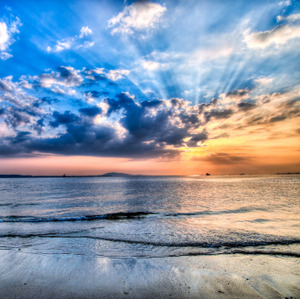 Every one of these experts—Biswas, Gleick, Graf, Pachauri,
Rabalais, Rasmussen, and Sedlak—agree, and at the heart of that
hope is water. It is the lifeblood of Earth. It is the lifeblood of
every living thing. It is our “force.” It is what binds us
together. Without water, we shall perish from the Earth.
Every one of these experts—Biswas, Gleick, Graf, Pachauri,
Rabalais, Rasmussen, and Sedlak—agree, and at the heart of that
hope is water. It is the lifeblood of Earth. It is the lifeblood of
every living thing. It is our “force.” It is what binds us
together. Without water, we shall perish from the Earth.
Think Globally
Act Locally
Be a Participant
- Buy tickets online
- Printable order form
- Watch live online, or any time after the event
Acknowledging the International Decade for Action: Water for Life 2005–2015